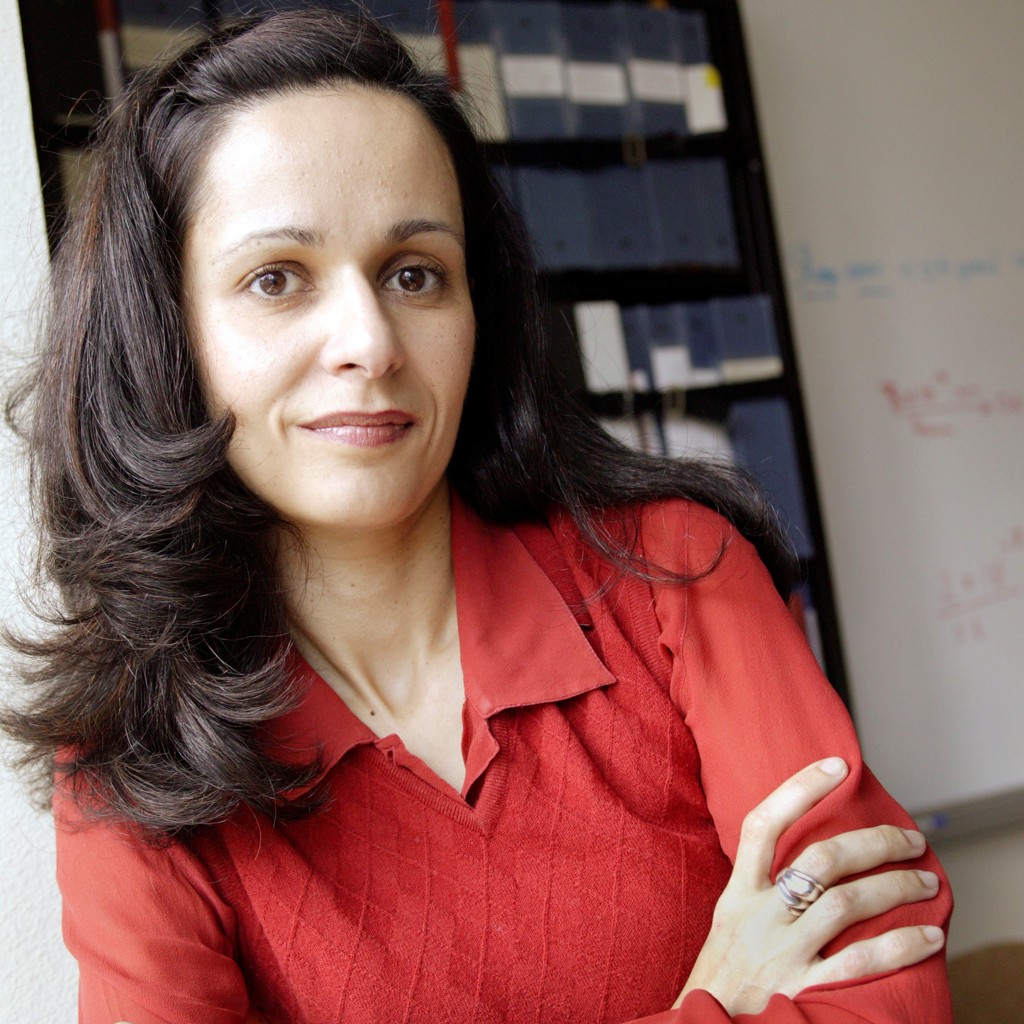Regina Soufli
Lawrence Livermore National Laboratory, United StatesFor pioneering contributions to the development and characterization of extreme ultraviolet, X-ray and gamma-ray optics.

Many scientists recall the moment in childhood when they instantly decided what they wanted to do for their life's work. Though she was always inclined toward science, Regina Soufli didn't get her flash of insight until she started graduate school.
A course in X-ray optics at the University of California, Berkeley, captured the imagination of Soufli, who went on to make short-wavelength radiation her career. Since 1999 she has worked as a physicist and principal investigator at Lawrence Livermore National Laboratory, USA, where she has developed many X-ray and extreme-ultraviolet optical techniques and optical coatings for such diverse applications as photolithography and space imaging.
Born and raised in Athens, Greece, Soufli says her parents encouraged her intellectual curiosity. She enjoyed her mathematics and science courses and thought she would study something technical in college, though she did not have an exact goal in mind. “I was thinking when I was a child that I might be a chemist, but I really had no accurate perception what it truly means to be a scientist,” she says. She earned an undergraduate degree in electrical engineering at the National Technical University of Athens, but her ultimate field of specialization remained hazy.
Moving from Greece to the United States for graduate school, Soufli unexpectedly struggled at first as she adapted to a new system of learning and working. In the spring of her first year at UC Berkeley, though, she took the X-ray optics class taught by David Attwood, the founding director of the Center for X-Ray Optics (CXRO) at Lawrence Berkeley National Laboratory. “I learned that one could use X-rays to probe the properties of atoms and molecules at the most fundamental level,” she says. “I also learned that one could make X-ray microscopes and look at the biological specimens with nanometric resolution, and make X-ray telescopes with X-ray optics to look at the Sun and the stars and the cosmos.” With the fresh focus and the encouragement of professors and fellow students, she earned high marks on her qualifying exams.
That summer, Soufli started research on x-ray optics and x-ray interactions with matter at CXRO under the direction of Eric Gullikson. She completed her PhD in electrical engineering and computer sciences in 1997 and then spent a short stint working on the Chandra X-ray Observatory at the Harvard-Smithsonian Center for Astrophysics, USA.
Soufli's first assignment at Livermore was on the extreme ultraviolet lithography project run by the three US national laboratories in partnership with the US semiconductor industry. While helping to develop a new, short-wavelength photolithography technology for next-generation microprocessors, she says, she “learned what it means to work on cutting-edge R&D as part of a large, interdisciplinary team, adhering to very strict deadlines and deliverables.” She assumed her first leadership role after a couple of years of hard work and success.
Today, Soufli specializes in thin-film and interference coatings for the mirrors and gratings used in X-ray optics. She developed the multilayered coatings for the extreme-ultraviolet mirrors in NASA's Solar Dynamics Observatory, and she called witnessing the spacecraft's February 2010 launch at the Kennedy Space Center a “life-altering event.”
She published her first two papers in Applied Optics, considers the OSA journals to be of the highest quality in the field and reviews many papers for Optics Express and other OSA journals.
Even though Soufli works at the cutting edge of her field, she holds great admiration for the discoveries made by ancient civilizations: Mesopotamia, Egypt, China and, of course, Greece. She wonders, for example, about the remaining mysteries of the Antikythera mechanism, a device found at the bottom of the Aegean Sea and dated to 150 to 100 BCE. Recent X-ray tomography of the mechanism revealed it contained clock-style gears of a surprising level of sophistication that mysteriously disappeared until the 14th century. She asks: What other types of knowledge were discovered and then lost in the sands of time?
Profile written by Patricia Daukantas, Science Writer/Editor
